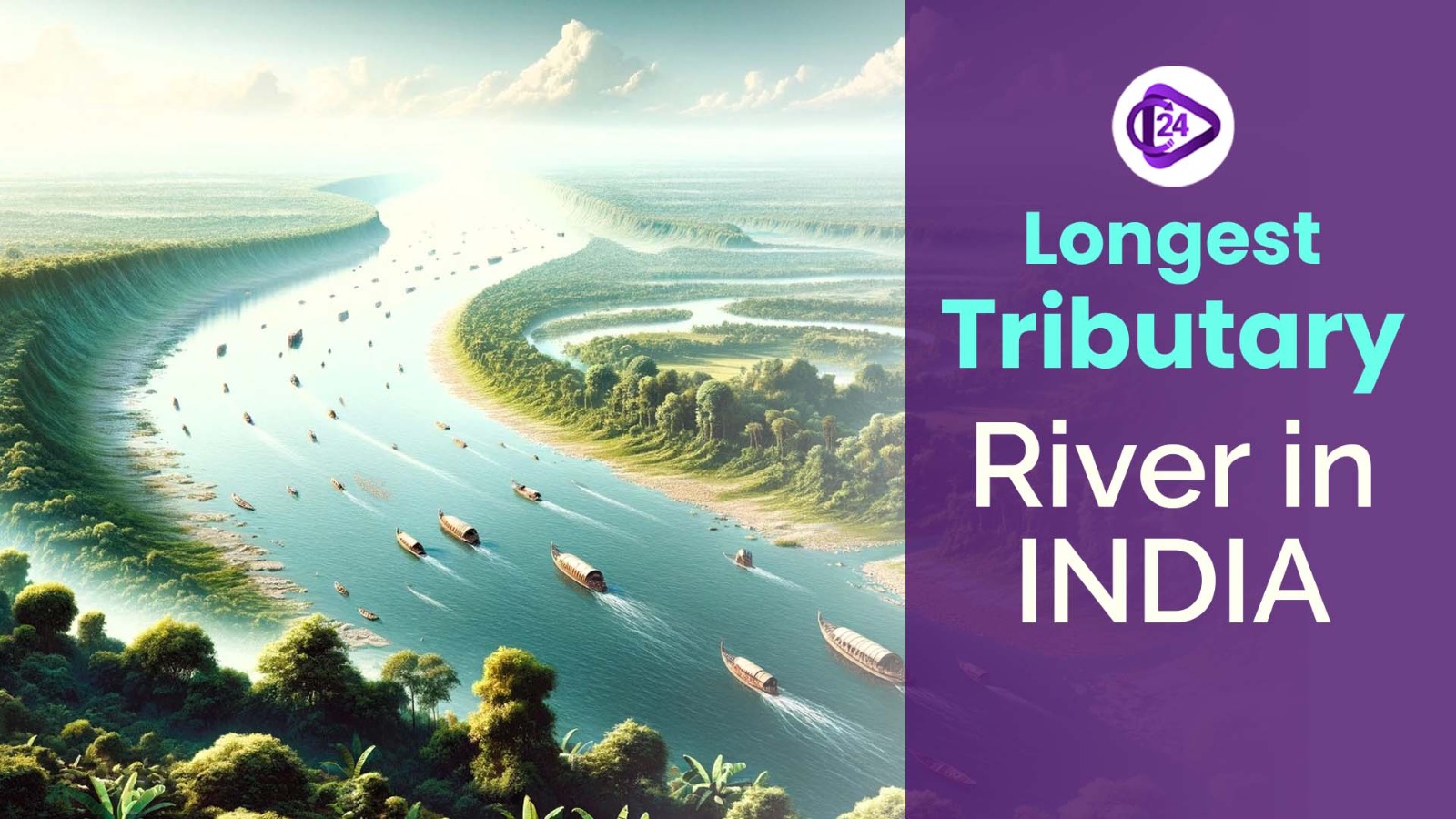The Largest River in Northern India: Exploring the Yamuna’s Role in Religion, Economy, and Ecology

Indian history and its geography can be greatly described through the major rivers of the country. Of them the Yamuna River, the longest among the affluents of the Gang has been distinguished not only as a source of fresh water and an object of worship and ceremonial devotion but also as an example of the balance between cultural and natural worlds. Religious and economically, the Yamuna plays an important part in the lives of millions of people. In this particular article, we shall look at the trajectory of the Yamuna River, its significance in culture and its coping with some of the difficulties in future especially pollution.
Overview of the Yamuna River: India’s Sacred Tributary
One of the largest rivers of northern India and the traditionally right bank tributary of the River Yamuna has stretched up to 1436 km and originates from the Yamunotri Glacier in the Garhwal Himalayas of Uttarakhand. It runs through Haryana, Delhi, as well as Uttar Pradesh; it joins the Ganges River at the Triveni Gath in Prayagraj. The Yamuna is also several tens of kilometers long and sacred, cultural, and ecological importance in India.
That is why the Yamuna River has a particular religious significance among the people of India.
The Yamuna also has significant religious significance: for the Hindus. It is believed that river has some connection with Lord krishna and his childhood where he grown up in Vrindavan, which is close to this river. It is also the important places of worship, and the number of believers visits the site is about thousands every year. With its source in Yamunotri Glacier in Uttarakhand state its anament mentioned as one of the Char Dham Yatra point and thus spiritual hub.
The Journey of the Yamuna River: A Lifeline for Millions
Depending on the time of the year, the Yamuna flows through the hills of Uttarakhand and through the fertile fields of Haryana, Delhi and Uttar Pradesh. As it progresses, the river supplies millions with water for agriculture, domestic use, and for industries.
- Uttarakhand: It originates from the Yamunotria Glacier of the Garhwal Himalayas.
- Haryana and Delhi: Yamuna has an importance in agriculture and provides water to the industrial sector as well.
- Uttar Pradesh: Going through Mathura, Agra, and Kanpur and then merging with the Ganges at Prayagraj earlier known as Allahabad.
Significance of the Yamuna River in Terms of Cultural as well as Religious Parameters
It is convenient to call the Yamuna a river; however, this is certainly not everything that can be said about her. It is socially and religious very much a part of the peoples of India.
Connection with Lord Krishna
This river, called the Yamuna, is closely linked to Lord Krishna, which is told young years of which are associated with the mentioned river. Another important shrine town is Vrindavan lying close to the river.
Festivals and Rituals
The river is also associated with several Hindus’ dedicated ceremonies like Kartika Purnima and Chhath Puja, in which people perform puja and other activities or the famous Yamuna Aarti. These rituals underline the fact that people are in close proximity with the river on spiritual terms.
Economic Importance of the Yamuna River: Agriculture and Industry
Agricultural Water Supply
Telinga: The Yamuna is important source of irrigation water specially in Haryana, Delhi and Uttar Pradesh states. Most of the crops like wheat, rice, and sugarcane are totally depends on the water from the river.
Industrial Use
The river also sustains industries in major city such as Delhi and Agra, from where water from the Yamuna is utilised for industrial and commercial uses.
Ecological Importance: Flora and Fauna and the Yamuna Basin
The Yamuna River has the water ecosystem that requires protection from pollution areas around the River Basin. Fish and other aquatic life as well as bird life migrates to the waters of the lake. Some of the flora that may be worthy of note include; – Gangetic Dolphin, crocodiles, and the Sarus Cranes.
Chambal River: Chambla is the third longest branch of the Yamuna river which has one of the rare species like dolphin and mugger.
Major Tributaries of the Yamuna River
The Yamuna is fed by several important tributaries:
Left Bank Tributaries:
- Hindon River
- Tons River
- Hanuman Ganga
- Sasur Khaderi
Right Bank Tributaries:
- Giri River
- Baghain River
- Chambal River
- Betwa River
- Ken River
- Sindh River
These tributaries account for so much of the discharge into the Yamuna and are instrumental in determining the river’s health.
An Analysis of Pollution and Environmental Challenges of the Yamuna River
Yamuna River has been highly polluted much due to factors such as urbanization, industrialization and draining of agricultural farmland. Some major issues include:
- Untreated Sewage: Places such as Delhi and Agra dump millions of liters of raw sewage into the river.
- Industrial Effluents: Industries located along the side of the water body release pollution in the water making it even worse.
- Encroachment: Due to increased urban development people have settled around the banks of this river thereby regulating the natural flow of the water and reducing its degree of flushing.
Conservation Efforts: How to make Yamuna River Cleaner and Healthier?
Yamuna Action Plan (YAP)
This led to Indian Government putting forward the Yamuna Action Plan to help overcome this problem of water pollution. This plan pays much attention on proper management of wastes and sewage.
Sewage Treatment Plants
For untreated sewage the following sewage treatment plants have been established along the river.
Public Awareness Campaigns
Sensitisation programmes are being organised to create awareness of the general public about the conservation of the river and minimisation of pollutants.
Key Facts about the Yamuna River
|
Parameter |
Details |
|
Origin |
Kalind Parvat, Uttarakhand |
|
Length |
1,436 kilometers |
|
States It Flows Through |
Uttarakhand, Haryana, Delhi, Uttar Pradesh |
|
Confluence |
Prayagraj (Ganges) |
|
Major Tributaries |
Chambal, Betwa, Ken, Giri, and others |
|
Cultural Importance |
Associated with Lord Krishna, religious festivals |
Conclusion: Yamuna River and its story
It has not only a function but is also an emblem of the spiritual, cultural, and nationalist endowment of India – the Yamuna River. From its source at Yamunotri Glacier to the point where it merges with Ganga at Prayagraj the Yamuna holds millions of lives and nourishes cultures and rendering support to ecosystems. But now it is in danger owing to pollution and the process of urbanization; so, everyone should protect this river.
FAQs
Q 1. What is the Yamuna River's significance in India?
Ans. The Yamuna River is the longest and most important tributary of the Ganges, providing water for agriculture, industry, and domestic use in northern India. It also holds immense religious importance for Hindus, especially due to its association with Lord Krishna.
Q 2. Where does the Yamuna River originate?
Ans. The Yamuna River originates from the Yamunotri Glacier in the Garhwal Himalayas of Uttarakhand, India. It flows through states like Uttarakhand, Haryana, Delhi, and Uttar Pradesh before merging with the Ganges at Prayagraj.
Q 3. Which cities are affected by the Yamuna River's pollution?
Ans. Major cities like Delhi, Agra, and Mathura are significantly affected by the pollution of the Yamuna River. Untreated sewage and industrial effluents contribute to the deteriorating water quality of the river.
Q 4. What are the major tributaries of the Yamuna River?
Ans. The major tributaries of the Yamuna include the Chambal, Betwa, Ken, Giri, and Hindon rivers. These tributaries play a crucial role in feeding the Yamuna and maintaining its water flow.
Q 5. What efforts are being made to conserve the Yamuna River?
Ans. The Indian government has initiated the Yamuna Action Plan (YAP) to tackle pollution and waste management. Sewage treatment plants and public awareness campaigns are also part of efforts to clean and conserve the river.




